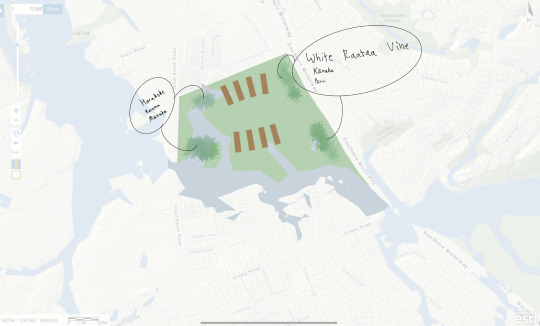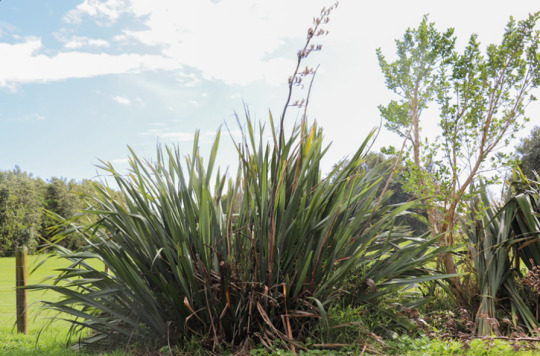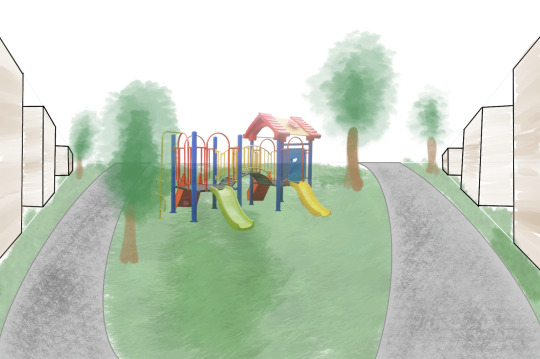Text
Temporary Housing
The contsruction of the new townhouses will happen in small steps. A few already existing houses in Raataa Vine will be demolished at a time. While the residents of those demolished dwellings are waiting for their new townhouses they will stay in portable homes that will be placed in Felicia Park. A portable home is a type of structure that is built to be easily moved when necessary and they are not meant to be permanently fixed to a site.

0 notes
Text
Wetland Revitalisation #2
Auckland Council has listed these considerations to be important steps in restoring a wetland:
• "Fencing – keep stock out of the wetland. Often putting a
fence around a wetland is all you need to do. Nature will
do the rest!
• Restore the edges of the wetland with a buffer of native
plants. This buffer planting will help to protect the
wetland, act as a filter for runoff from surrounding land
and provide habitat for wetland birds.
• Restore natural water levels and flows. Most native
wetland plants should come back themselves once
natural water levels are restored and stock are excluded.
Check for any artificial obstructions to the passage of
native fish. It is important that any major work, such as
removing drains or artificial obstructions e.g. culverts, is
done before any restoration planting is undertaken, so
that new wetland plants can establish and then be left
to adapt naturally to the water levels in the wetland.
Artificial drains can also be left to silt up over time,
and water flows encouraged to find their natural path.
You may need a Resource Consent if you are doing any
works in a watercourse or wetland. Seek advice from
the Auckland Council about consent requirements and
allowing for fish passage.
• Control weeds and pests such as willow - the Auckland
Council biosecurity team can provide further advice.
(See end of this brochure for contact details)
• The aim is to restore natural wetland systems. The
creation of artificial ponds and open water bodies is
not recommended. They can be difficult to keep free of
weed and algae in summer and their growth may block
fish access. Most native birds prefer swampy areas with
rushes, raupo or flax rather than deep open water.
• Talk to your neighbours. Let them know what your plans
are. Maybe you can each work on sites that can then be
linked to increase the area of wildlife habitat and provide
wildlife corridors."
0 notes
Text
Wetland Revitalisation #1

A flowchart provided by Auckland Council for restoring a wetland.
0 notes
Text
The Importance of Rivers to Māori
"Water is a taonga of huge importance to iwi. Water is linked to identity, used for transport, gathering food and other materials.
Māori recognise many different types of water/momowai and each has different values and uses. Each body of water also has a life force/mauri and should not be mixed with water from another source. For Māori, water is the essence of all life, like the blood of Papatūānuku (Earth mother) who supports all people, plants and wildlife.
Enhancing the health and wellbeing of our waterways is a priority for many Iwi. Māori often consider their personal health and the health of the iwi to be linked to the health of their water bodies.
Māori identity is linked to rivers. Māori are connected to water and to the whole natural world through whakapapa – a lineage that descends from Ranginui and Papatūānuku down to people and all parts of the environment. Rivers are thought of as tīpuna (ancestors) that have been with us throughout history.
Māori used rivers for:
a source of mahinga kai - food
hāngi stones
cultural materials such as raupō and taonga such as pounamu
access routes and a means of travel
access to important wāhi tapu – sacred sites
settlements.
Food sources found inland or at sea could be reached easily by river. Māori recognised the link between rivers and the sea and the need to look after rivers from their source in the mountains right through to the sea."
0 notes
Text

Final drawing of where native plants will go in regards to the floodplains.
0 notes
Text

Continued planning of where native planting will be placed within the site in regards to the floodplains - work in progress.
0 notes
Text
How Wā Is Present In My Design
My resdesign of Raataa Vine consists of the area transitioning from its current neglected, unsafe, and uninspiring state to a one that has place, climate resilience, safety etc.
0 notes
Text
Understanding Wā
Wā can be understood as a transition from one thing to another. For example, a seed growing into a flower.
"It can be both space and time...Wā is a measurement of whakapapa...It's not just a space, it's all of those histories that have gone on before that we carry with us"
"The transition"
"The Wā is very cyclic and I use that term deliberately because when I think of cyclic I think of cycles of life...The incoming tide, the outgoing tide and that will always happen and so there's always a cycle to that...The rising of the sun, the setting of the sun. That's very cyclic."
"Wā can be seen as a transition, a moment. An example is the movement from being a hine to a wahine" - Dr Valance Smith
vimeo
0 notes
Text
Discussing Vā
"It was one of the things that we grew up with and it was like growing up in an ocean. You know, growing up in an ocean where everything was related... Everything was related, we're related to living things, to other people. But the most important relationships were to other people in your aiga, first, and then your aiga's relationships to other aiga."
"This principle has remained very important in my life. You can't get away from it. In some ways many people have tried, as you know. Isolate themeselves completely, don't have anything to do with Samoa, don't have anything to do with your relatives. Bu they can't in the sense the relatives will ring them up."
"It's a small word with an enormous meaning, and if you add it to other words it becomes even bigger." - Albert Wendt https://vimeo.com/590149431/798e100e5b
"Vā, the space between, relationship. As well as a physical spatial dimension, Vā is also a conceptual space, the relational space." - Auckland Museum https://www.aucklandmuseum.com/getmedia/1f0cb555-8206-4cb3-adce-3e8cd838f026/auckland-museum-teu-le-va-the-pacific-dimension-2016#:~:text=V%C4%81%2C%20the%20space%20between%2C%20relationship,conceptual%20space%2C%20the%20relational%20space.
In this ideology everything has a relationship with one another at varying scales, and they are always able to be strengthened. This includes people, places, knowledge etc.
0 notes
Text
Analysis of Native Plant #6 White Raataa Vine

White Raataa Vine is a tough and resilient plant that is suitable for open spaces. It is also tolerant of drought and moderate frost. Information regarding it's flood resistance is minimal, therefore it will not be placed in any floodplains of Raataa Vine.
0 notes
Text
Analysis of Native Plants #5 - Harakeke

Harakeke is a robust, wind tolerant, long-lived, and flood/drought resistant plant.
0 notes
Text
Analysis of Native Plants #4 - Karamu

Karamu is suitable for floodplains.
0 notes
Text
Analysis of Native Plants #3 - Kānuka

Little information regarding the kānuka's flood resistance can be found. For this reason all kānuka in my redesign of Raataa Vine will not be placed in floodplains.
0 notes
Text
Analysis of Native Plants #2 - Mānuka

Mānuka has a root system that is able to withstand continuous flooding of up to 272 days.
0 notes
Text
Analysis of Native Plants #1 - Pūriri

Pūriri comes from environments with rainfall and prefer consistent moisture. There are risks with overwatering the root including rot and other issues. Pūriri thrives a lot under plenty of sunlight but can also withstand areas with cover. Excessive shading can negatively impact the plant's growth and health. Pūriri adaps to different lighting conditions at different stages of growth. Overexposure may cause the plant to stress and underexposure possibly prevents growth.
0 notes
Text
Community Centre Concept 3

The third concept features a park area with a playground, rather than a shelter that host events and activities for the community.
0 notes
